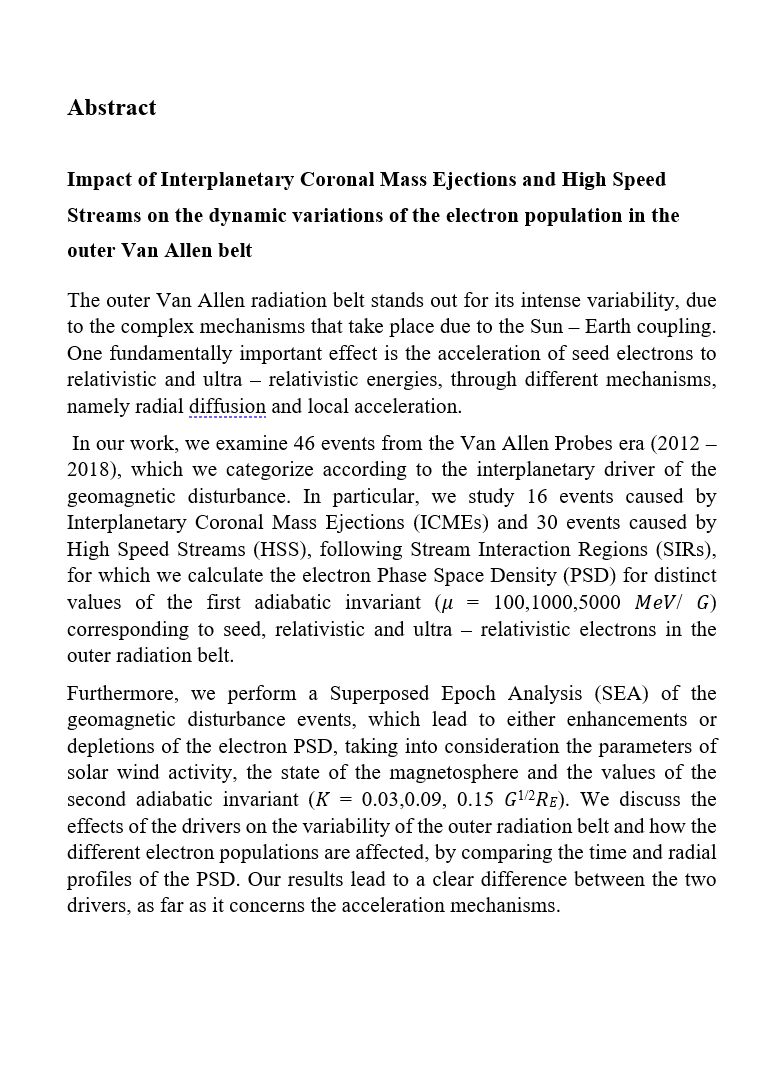


This includes examining the scientific advancements, analytical methodologies, and key data sources driving innovation in the study of the outer Van Allen radiation belt dynamics. The research focuses on the effects of High-Speed Streams (HSSs) and Coronal Mass Ejections (CMEs), the two dominant solar wind drivers influencing the variability of the belt's electron population. It delves into their role in geomagnetic disturbances and broader implications for space weather forecasting and mitigation.
A core aspect of the research involves analyzing the interplay between HSSs, CMEs, and outer belt electron populations. By converting electron flux data into phase space density (PSD), the study leverages adiabatic invariants to assess the impact of these solar drivers on different electron energy populations. Using Superposed Epoch Analysis (SEA), the research evaluates the statistical response of the electron population to HSSs and CMEs, addressing the complexities of magnetospheric dynamics.
The study integrates multi-source data to provide a holistic view of solar-terrestrial interactions:
• RBSP instruments: Magnetic Electron and Proton Spectrometer (MagEIS) and Relativistic Electron Proton Telescope (REPT) for measuring electron flux and magnetic field variations.
• OMNIWeb database: Solar wind parameters, including speed (Vsw), density (Np), interplanetary magnetic field (IMF) components (Bx, By, Bz), and electric field (Ey).
• SuperMAG global magnetometer network: Geomagnetic indices (SME, SML, SMU) for capturing disturbances during HSS and CME events.
• Event catalogs: CME event times from the SOHO/LASCO CME catalog and HSS intervals derived from solar wind speed data.
The research identifies challenges such as the variability in CME properties (e.g., speed, density, magnetic structure) and the contrasting nature of HSS and CME impacts. CMEs often cause intense but short-lived disturbances, while HSSs induce more gradual yet sustained effects. Accurate phase space density analysis also requires high-resolution data and careful event selection to ensure robust conclusions.
The study proposes a comparative framework to evaluate HSS and CME impacts. By using the time of maximum magnetopause compression (Lmpmin) as the zero epoch for SEA, the research systematically examines electron flux variations across energy populations during both types of events.
Distinct electron energy populations were analyzed based on first adiabatic invariant values (μ=100,1000 and 5000 MeV/G). The study also evaluates:
• Plasma wave generation associated with HSSs and CMEs.
• Differences in geomagnetic storm intensities driven by each solar wind driver.
• The role of CME shock fronts versus sustained HSS effects in altering radiation belt dynamics.
The research emphasizes the need for integrated observational campaigns and advanced models. Collaborations with space weather research networks, such as ESA’s Space Weather Coordination Group and NOAA’s SWPC, are critical to improving forecasting capabilities and risk assessments.
The study delivers key outcomes, including:
• Comparative Insights: HSSs and CMEs show distinct signatures in their influence on outer belt electrons, with CMEs inducing rapid enhancements in relativistic electron populations and HSSs causing gradual, sustained variations.
• Predictive Models: Integration of HSS and CME effects into space weather prediction frameworks, improving their accuracy and reliability.
• Geomagnetic Impact Assessment: Identification of conditions under which HSSs and CMEs drive the most significant magnetospheric disturbances.
These findings equip scientists, satellite operators, and policymakers with actionable knowledge to mitigate the risks posed by space weather phenomena. The integration of HSS and CME effects into predictive models fosters resilience in satellite operations, power grids, and other technologies sensitive to space weather events.

